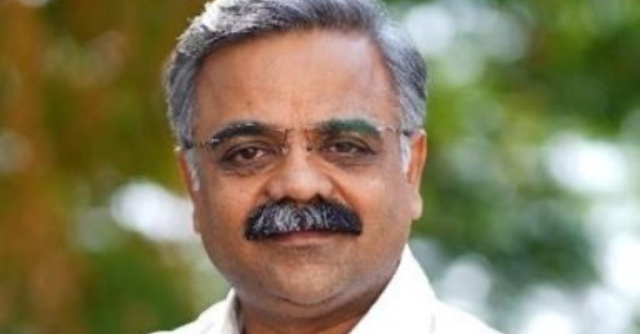
New Delhi, Aug. 5 -- At the turn of the decade, when Bengaluru had already consolidated its position as a tech hub, the government of Karnataka recognised that the next wave of innovation and tech development had to be more distributed and inclusive.
To that end, the Karnataka Digital Economy Mission (KDEM) was launched. A Section 8 organisation, KDEM, is a knowledge and partnership facilitator between the government and the industry ecosystem. Beyond Bengaluru is one of the flagship initiatives of the organisation that aims at developing regions outside of Bengaluru as emerging tech and economic hubs.
TechCircle interviewed Sanjay Gupta, CEO of KDEM, at the recently concluded Quantum India Bengaluru 2025 event, where the Karnataka Government introduced the state Quantum Mission with a Rs.1,000 crore outlay.
"Our broader mandate is to grow the digital economy of Karnataka across sectors such as IT/ITES, GCCs, ESDM, and deep tech. We approach this through three key pillars: helping existing companies grow their businesses within the state, attracting new investments, and enabling innovation that creates new models of revenue," said Gupta.
Technology is the horizontal enabler across all these pillars.
"It is no longer just about policies; industry leaders today ask deeper questions. They want to know about the strength of our ecosystem, the availability of talent, and the vibrancy of our innovation networks. If we cannot confidently position Karnataka's leadership in deep tech, we risk losing our competitive edge," he further added.
Beyond Bengaluru
Speaking about Beyond Bengaluru, Gupta noted that it is one of KDEM's most important initiatives. Gupta insists that these regions be referred to as emerging tech clusters instead of tier-2,-3 cities, calling it 'limiting'.
"We have mapped the entire state into six such clusters: Mysuru, Mangaluru, Hubballi-Belagavi-Dharwad (HBD), Tumakuru, Kalaburagi, and Shivamogga. Three years ago, we began focused work in Mysuru, Mangaluru, and HBD; Kalaburagi and Tumakuru were added recently, and Shivamogga will follow later this year," he explained.
Notably, in July, KDEM launched a vision document for Mysuru to develop it into a $10 billion digital economy by 2030, generating over 1,50,000 digital jobs and 2,500 startups.
These clusters operate by a development model that is industry-led. "Local industry leaders are the champions of each cluster," Gupta said. These cluster heads report directly to local industry and in dotted line to KDEM. This model enables decentralised decision-making, where strategy and execution are driven by the people closest to the ground; while KDEM supports with infrastructure, facilitation, and ecosystem development.
In three and a half years, over 90 companies have established operations in these emerging clusters, with more than 100 companies in the pipeline. These span diverse sectors such as cell manufacturing, EV, drones, medtech, aerospace electronics, PCB and laminates.
The startup grid has grown from 600-700 startups to over 2,000 startups from these regions. Our vision is to build this to 10,000 startups in the coming years.
Each cluster also has its own specialisation. For example, in Kalaburagi, the focus is on agriculture and agritech, bringing in AI and building the talent foundation to attract more industries. Japanese companies and IT firms are already exploring small-scale GCC operations in the region.
In the electronics and semiconductor manufacturing space, KDEM has launched EMC 2.0 clusters in Hubballi-Dharwad, Mysuru, and Tumakuru. Japanese company Nidec is setting up a plant in Hubballi, electronics firm Kaynes has established a large facility in Chamarajanagar, and battery manufacturer Tecchern has invested Rs.1,000 crore in a manufacturing plant.
"We are now building specialised zones like a 150-acre PCB (printed circuit boards assembly) park in Mysuru, with one company already committing Rs.1,250 crore. Bengaluru will soon host a laminates manufacturing unit, which is a key raw material for PCBs. We are also in advanced discussions to establish India's first component manufacturing hub," Gupta said.
In Mangaluru, KDEM launched the 'Come Home, Tiger' campaign to invite skilled professionals from around the world to return and explore opportunities in the cluster. Just two month into the launch, the organisation has received over 100 high-quality resumes. "If a GCC in Mangaluru seeks a niche tech role with 10 years of experience, we are now in a position to supply that talent," Gupta said.
According to Gupta, Karnataka is also investing semi-skilled talent, particularly ITI graduates, to support the growing manufacturing base, under schemes like Karnataka Skill Policy/
"Our ITI graduates are already contributing to sectors like automotive, defence, and semiconductors. We're also planning a dedicated Centre of Excellence (CoE) for Semiconductors and Electronics to build niche talent pools."
GCC ecosystem
India has over 1,800 GCCs today and the number is only growing. Bengaluru ranks number one in terms of GCC density, with close to 900 hubs. Other cities, especially Hyderabad, Chennai, and Delhi NCR are quickly catching up. When asked about competition to Beyond Bengaluru initiative from cities like Hyderabad, Gupta said that the GCC pie is big enough and everyone can benefit from it.
"We are now targeting mid-sized GCCs and have introduced the Nano GCC concept in our policy, offering full benefits to centres with as few as 50 employees. We are preparing a mid-market GCC report that highlights how Karnataka already hosts 50% of India's mid-sized GCCs. Our goal is to increase this to 70%, targeting 500 new GCCs in the next five years," he concluded.
Published by HT Digital Content Services with permission from TechCircle.
